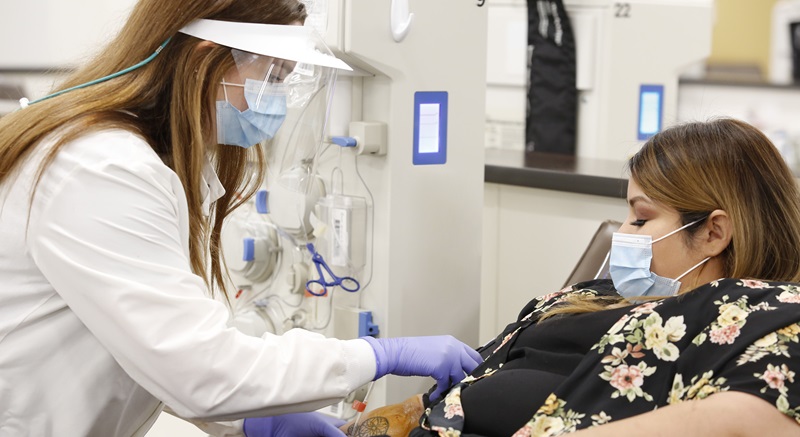How Does Rising Demand For Plasma Products Affect Donations At BioLife?

Advanced medical treatments lead to an increased demand for plasma products. With such urgency, centers like BioLife are facing a rise in pressure. To delve into how this surge affects plasma donations, examine the difficulties donation centers are running into, how it affects current and future donors, operational adjustments needed, and the implications of a broader healthcare system.
Learn about the growing need and how it is changing the face of plasma donation and what it might mean for donors and healthcare providers in the future. One thing that helps you in plasma donation is coupon code biolife deals. This coupon provides significant savings and benefits, making it an excellent opportunity for those interested in contributing to Plasma donation.
The Increasing Demand for Plasma Products
With an ever-increasing demand for plasma products due to their critical role in treating a variety of medical conditions, the overall needs of plasma usage, including clotting factors to maintain hemophilia patients, immune globulins for immune deficiencies, and albumin for liver disease, have been growing. Consequently, research continues to improve and introduce new applications, thereby increasing the demand for plasma.
Impact on Plasma Donation Centers
It happens to be one of the leading centers that collect and process plasma donations. BioLife faces several challenges because of the growing demand for plasma products:
- More Pressure to Recruit Donors: With the increasing demand, BioLife has been forced into recruiting more donors. It is a process that involves expansive outreach and marketing to attract and retain donors in an uninterrupted flow of volunteers.
- Operational Stress: Increased quantity of donations means that there is enhanced operational capacity. The facilities of BioLife would have to be better geared towards processing and testing more, straining the resources as well as the infrastructure.
- Regulatory Compliance: With increased demand, there arises increased scrutiny. The company must measure up to exacting regulatory standards that all plasma donated will pass safety and quality analyses.
How Does Increasing Demand Impact Behavior among Donors?
Impact on the donor side can be reflected in behaviors and experiences from the higher demand for plasma products:
Incentives and Rewards
BioLife frequently incentivizes donations. Given the rising demand for plasma, such incentives may increase in intensity. Donors may receive higher payments or extra benefits as BioLife struggles to maintain a good stock of donors.
Donor Fatigue
Although the incentives are provided, some donors may grow tired or be burnt out from the rising number of donations needed. In this respect, finding a balance between an increased need for more plasma and the need to ensure the well-being of a donor and avoid overstraining them is essential for BioLife.
Public Awareness Initiatives
BioLife invests in public awareness initiatives meant to heighten public awareness of plasma donation and its implication on patients, therefore, calling for more people to become involved and stay engaged.
Types of Plasma Proteins and Their Significance
It is only by understanding the kinds of plasma proteins and their significance that why plasma donations assume importance in the current context. Plasma comprises several proteins such as:
- Albumin: They assist in maintaining the volume and pressure in blood.
- Clotting factors: These help in clotting the blood, and hemophilia can be treated.
- Immunoglobulins: These play important roles in the upkeep of the immune system and treatment of immune deficiency.
Every type of plasma protein has critical applications in inpatient treatment, so maintaining a consistent supply of plasma donations ensures that they are available when patients need them.
Frequently Asked Questions
How will an increase in the demand for plasma products impact my donation experience at BioLife?
As demand increases, BioLife will make changes in donation procedures or scheduling. However, the center will always offer an enhanced experience for all donors through more incentive opportunities and streamlined processes.
What is BioLife doing to deal with the high demand for plasma?
BioLife is expanding facility space, recruiting more donors, and conducting public campaigns to meet the increased demand for plasma products.
Would higher demand mean longer lines at the donation center?
Increased demand for plasma products does indeed often mean long lines; BioLife is addressing such through efficiencies in scheduling and operations.
What can I do to help increase demand for plasma products?
By being a consistent donor and motivating others to donate, you can help meet the soaring demand. BioLife relies on the different communities requiring plasma to meet the surging demand and thus provides a steady supply of plasma.
Conclusion
The growing demand for plasma products does indeed hold major implications on donations at BioLife. With the need for these crucial products, BioLife is stretched in donor recruitment and management, operational management, and keeping current with regulations.
BioLife seeks to overcome these challenges by upgrading its facilities, adding provisions for incentives to donors, and public education to help sustain its much-needed role in health care. You are helping to fill this increasing need and make a vital difference in the lives of patients who count on plasma products for their health and well-being.